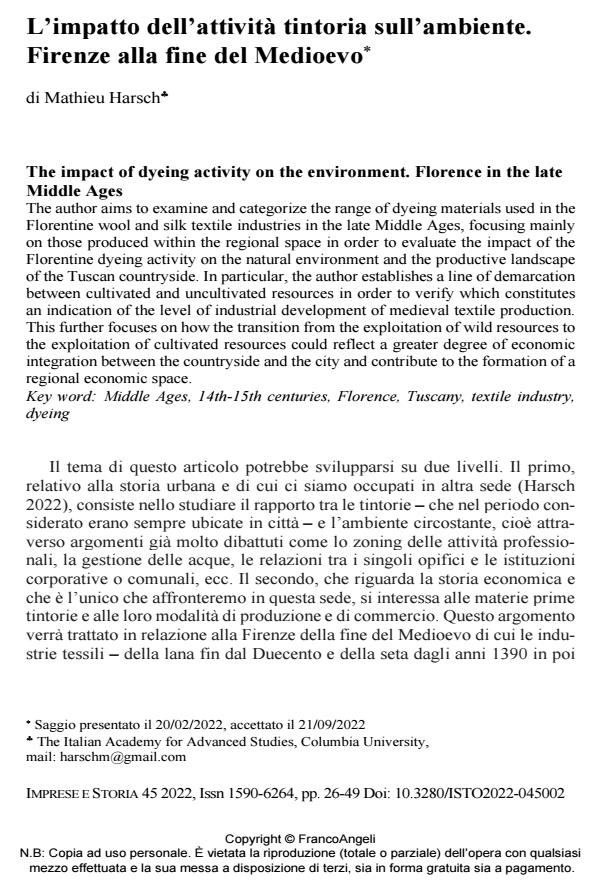The impact of dyeing activity on the environment. Florence in the late Middle Ages
Journal title IMPRESE E STORIA
Author/s Mathieu Harsch
Publishing Year 2022 Issue 2022/45
Language Italian Pages 24 P. 26-49 File size 272 KB
DOI 10.3280/ISTO2022-045002
DOI is like a bar code for intellectual property: to have more infomation
click here
Below, you can see the article first page
If you want to buy this article in PDF format, you can do it, following the instructions to buy download credits

FrancoAngeli is member of Publishers International Linking Association, Inc (PILA), a not-for-profit association which run the CrossRef service enabling links to and from online scholarly content.
The author aims to examine and categorize the range of dyeing materials used in the Florentine wool and silk textile industries in the late Middle Ages, focusing mainly on those produced within the regional space in order to evaluate the impact of the Florentine dyeing activity on the natural environment and the productive landscape of the Tuscan countryside. In particular, the author establishes a line of demarcation between cultivated and uncultivated resources in order to verify which constitutes an indication of the level of industrial development of medieval textile production. This further focuses on how the transition from the exploitation of wild resources to the exploitation of cultivated resources could reflect a greater degree of economic integration between the countryside and the city and contrib-ute to the formation of a regional economic space.
Keywords: Middle Ages, 14th-15th centuries, Florence, Tuscany, textile industry, dyeing
Mathieu Harsch, L’impatto dell’attività tintoria sull’ambiente. Firenze alla fine del Medioevo in "IMPRESE E STORIA" 45/2022, pp 26-49, DOI: 10.3280/ISTO2022-045002